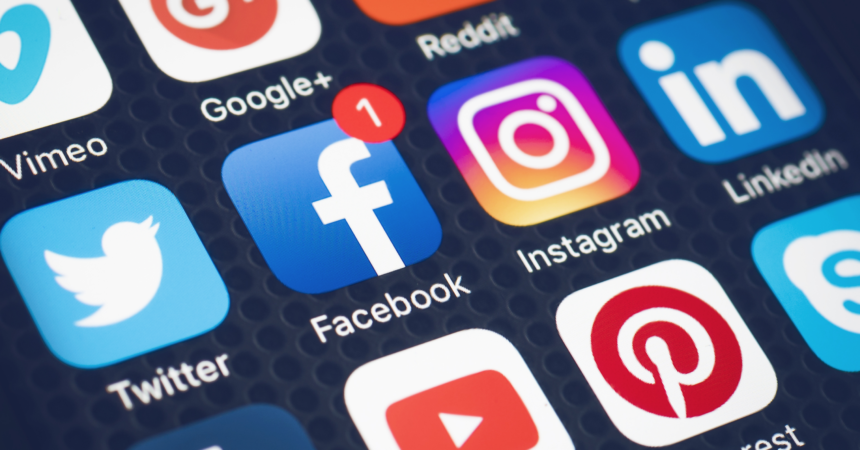Myths and truths about false news
Dear Aunt Kathy spends a lot of time on social media. She likes to share cute animal videos, funny observations … and, sometimes, false news. A lot of folks know someone like Kathy, maybe a close friend or relative, an acquaintance or a connection of a connection online.
When people post or share false news, researchers have found, there is a tendency to stick with their positions even when reliable sources point otherwise. Discussions can grow exhausting and relationships can become strained, sometimes breaking apart.
Politics, trusted institutions, coronavirus facts, public health guidelines and the believability of scientists and medical professionals have all come into question in 2020, with friends unfriended and even close connections becoming divided.
What’s the mindset behind this phenomenon?
“You can look back 80 years to the development of Rumor Theory and how unconfirmed messages spread from person to person,” says Scott Walters, PhD, HSC School of Public Health Regents Professor. “It’s the same today. Rumors are more likely to spread when there is uncertainty, urgency, and anxiety around what’s happening. If there is a lot of emotion, the threshold for evidence goes way down.”
These things may have always been true, but social media has amplified it in recent years. Fallout from the spread of false health information is especially concerning when it comes to public health information like COVID-19 precautions, vaccines and lifesaving medical advice, says Dana Litt, PhD, HSC Associate Professor of Health Behavior and Health Systems.
Dr. Litt worries that today’s misinformation can have a far greater impact because of the way social media connects millions of people through a single comment, video or viral share.
“One way to combat misinformation is through media literacy training, which teaches people to critically evaluate the why’s and who’s behind what they see in the media and online,” she says. “When someone shares information about vaccinations, for example, does that person have a reason to sway you in a certain direction? Are they showing the full story? Are their sources credible?”
With age and experience, people sometimes become more invested in their beliefs and are less apt to change them, making it even more important to build health and media literacy skills early in life, Dr. Litt says.
“Going back in history, you’d have to print flyers or shout your message in the streets to communicate to the masses, but now anyone on social media has that ability,” Dr. Walters notes.
“Even if the information is disproven or disputed, it can be too late. The first mention of something—whether true or not, and even if retracted later—gets the most attention. The tendency is to double down on the initial message, rather than adjust your opinion.”
Science explains a lot. False news tends to be more novel and is more likely than truth to inspire fear, disgust, surprise or other strong emotions. False news blurs the lines between fact and opinion, enabling anyone to be an “expert.”
Part of its strength is in the fuzziness of the message, “making it unclear what the truth is or even if there is truth,” says Dr. Litt.
False news covers a number of categories. Misinformation is inaccurate and may deliberately be intended to deceive. Disinformation involves intentionally misleading or manipulated facts. While the term “fake news” has come to mean different things to different people, it is defined as deliberate fabrication that mimics the style of mainstream news, often in sensational, emotionally charged ways; these stories most often lack verifiable facts, quotes or sources. Trolls involve real people posting online to provoke others for their own amusement or as part of a coordinated effort to sway opinions and behaviors.
“Disinformation trolls depend on people debunking what they are saying, which often means we repeat the falsehood in our efforts to correct disinformation,” Dr. Litt says, “so instead, we should stay focused on the positive and state only the factual.”
“Some online misinformation doesn’t make much difference, like the rumor that Adele will be headlining the Super Bowl halftime show when it’s actually The Weeknd. But health related misinformation can make a big difference,” Dr. Walters says.
“If you’re saying that vaccines cause autism (they don’t) or masks spread COVID (also untrue), that can affect real-life behavior and ultimately people’s risk for getting sick. People might take actions that are harmful to themselves or their communities.”
Lately, social media platforms have begun labeling certain types of false news to help users discern what’s accurate. Response has been mixed, with the actions applauded by some and labeled as censorship by others.
New social media platforms have emerged, attracting millions to their sites with the promise of unrestricted access to information. From a social psychology perspective, both professors note, the more people feel their access to something is being limited, the more favorably they tend to feel about it and the more they want it.
For any online experience, what are the best ways to manage potentially false information?
“Approach it with a critical eye as you consider the sources and their credibility,” Dr. Walters offers. “Everything online looks the same – a well-designed false news story looks just like a legitimate one. The key to detecting a false narrative is to look in legitimate places for verification.
Universities are good sources, as are trusted media sites that have long been respected for accurate journalism. If you’re paying for your news, it’s probably better quality. If you’re not paying for it, the source is earning money another way, perhaps through heavy advertising or sensationalism.”
What about that great aunt, old high school friend or distant cousin who posts a steady stream of questionable ‘news’?
“I would approach these instances on a case-by-case basis. You might want to consider your level of closeness with the sharer, and tailor your approach and delivery to that. Sometimes it’s okay to walk away if there’s nothing you can say to change a person’s mind,” Dr. Litt says. “To preserve a relationship, you might share an unspoken agreement not to talk about certain things on public spaces like social media. As much as we might want to ‘win,’ is it worth it?”
“It’s totally fine sometimes to just call a truce.”
Private conversations are sometimes more productive, rather than debating or unfriending people you disagree with online, Dr. Walters suggests.
“Social media is an enormous space. There are lots of opinions and that’s a great thing. But these platforms are not good places for thoughtful debate. They are like giant bulletin boards – if you want a discussion, people might be more open one-on-one,” he says. “And if not, it’s okay to agree to disagree.”







Social media